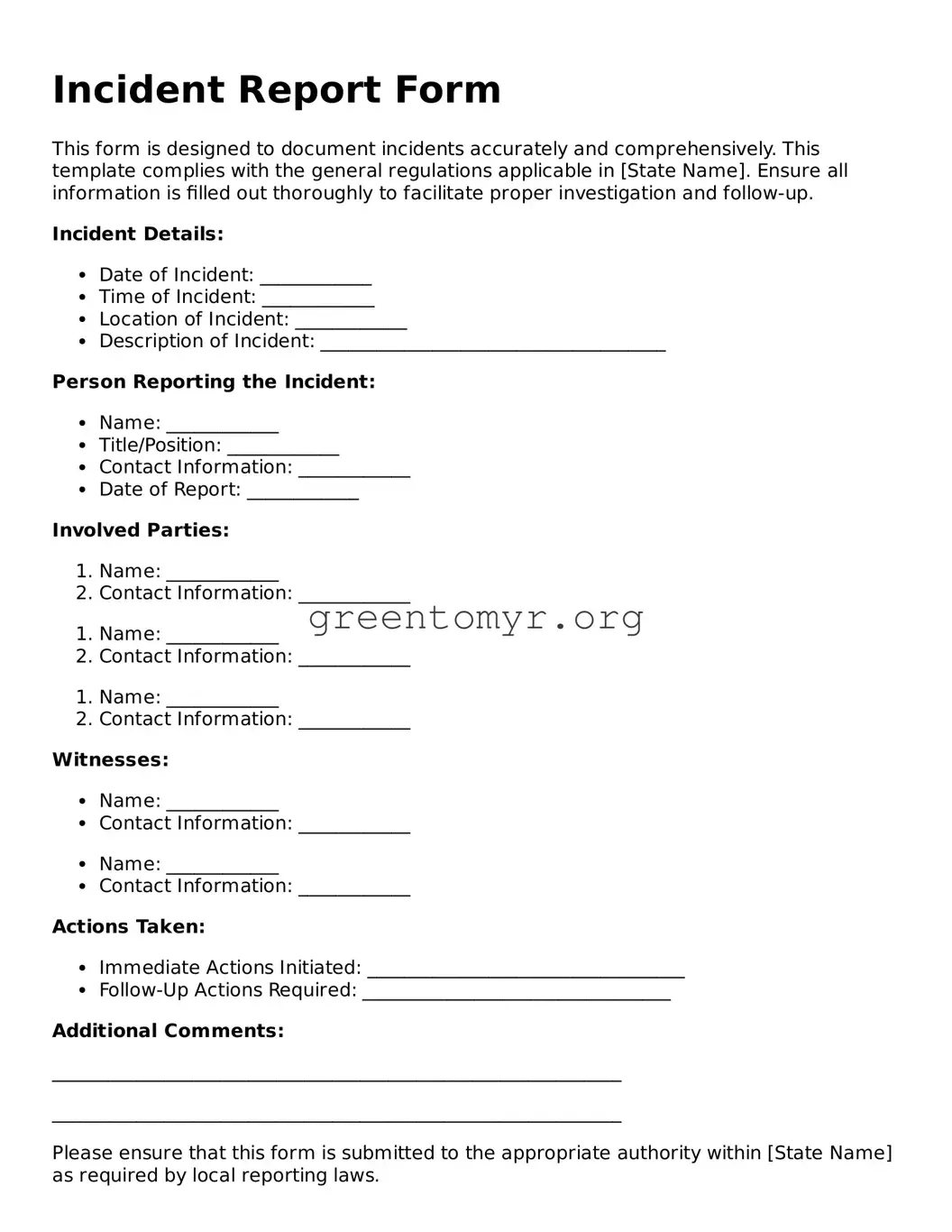An Incident Report Form is a document used to record details about an event or occurrence that has resulted in injury, damage, or an unexpected situation. This form helps provide a clear account of what happened, who was involved, and the circumstances surrounding the incident. It is often used in workplaces, schools, or any organization that needs to keep track of incidents for safety and compliance purposes.
Completing an Incident Report Form is important for several reasons:
-
Documentation:
It creates a written record of the incident, which can be essential for legal or insurance purposes.
-
Analysis:
The information can help organizations identify trends, improve safety practices, and prevent future occurrences.
-
Accountability:
Having a formal report promotes responsibility and transparency within the organization.
The responsibility for completing the Incident Report Form typically falls on the individual who witnessed or was involved in the incident. In some cases, supervisors or managers may also fill out the form to ensure all details are captured accurately. It’s vital that the person filling it out has a clear understanding of what happened.
An Incident Report Form usually asks for the following information:
-
Date and time of the incident.
-
Location where the incident occurred.
-
Description of the event, including what happened, who was involved, and any other relevant details.
-
Names and contact information of witnesses, if applicable.
-
Any immediate actions taken following the incident.
Yes, many organizations set specific time frames for submitting an Incident Report Form. It’s generally advisable to complete the report as soon as possible after the incident occurs, often within 24 to 48 hours. Timely submission helps ensure that all relevant details are accurate and that any necessary follow-up actions are taken promptly.
Yes, in many cases, the information on an Incident Report Form can be treated as confidential. Organizations often have policies in place to protect personal details and sensitive information. However, it’s essential to check with your workplace or institution for specific confidentiality practices and regulations regarding incident reports.
After you submit an Incident Report Form, the designated personnel, such as supervisors or safety officers, will review the information. They may follow up with you or other witnesses for further clarification. Depending on the incident's nature, an investigation may be conducted, and necessary actions will be taken to address the situation or prevent future incidents.
Are there any penalties for not reporting an incident?
Failing to report an incident may lead to various consequences, depending on the organization's policies. Possible penalties include disciplinary action, loss of trust, or potential legal implications. Reporting incidents helps maintain a safe environment for everyone, so it’s in everyone's best interest to document and report accordingly.
